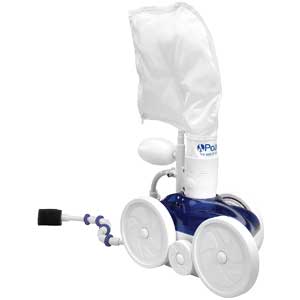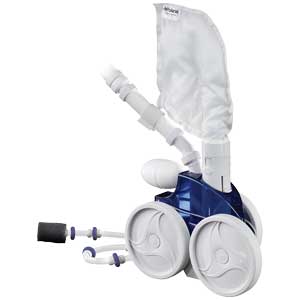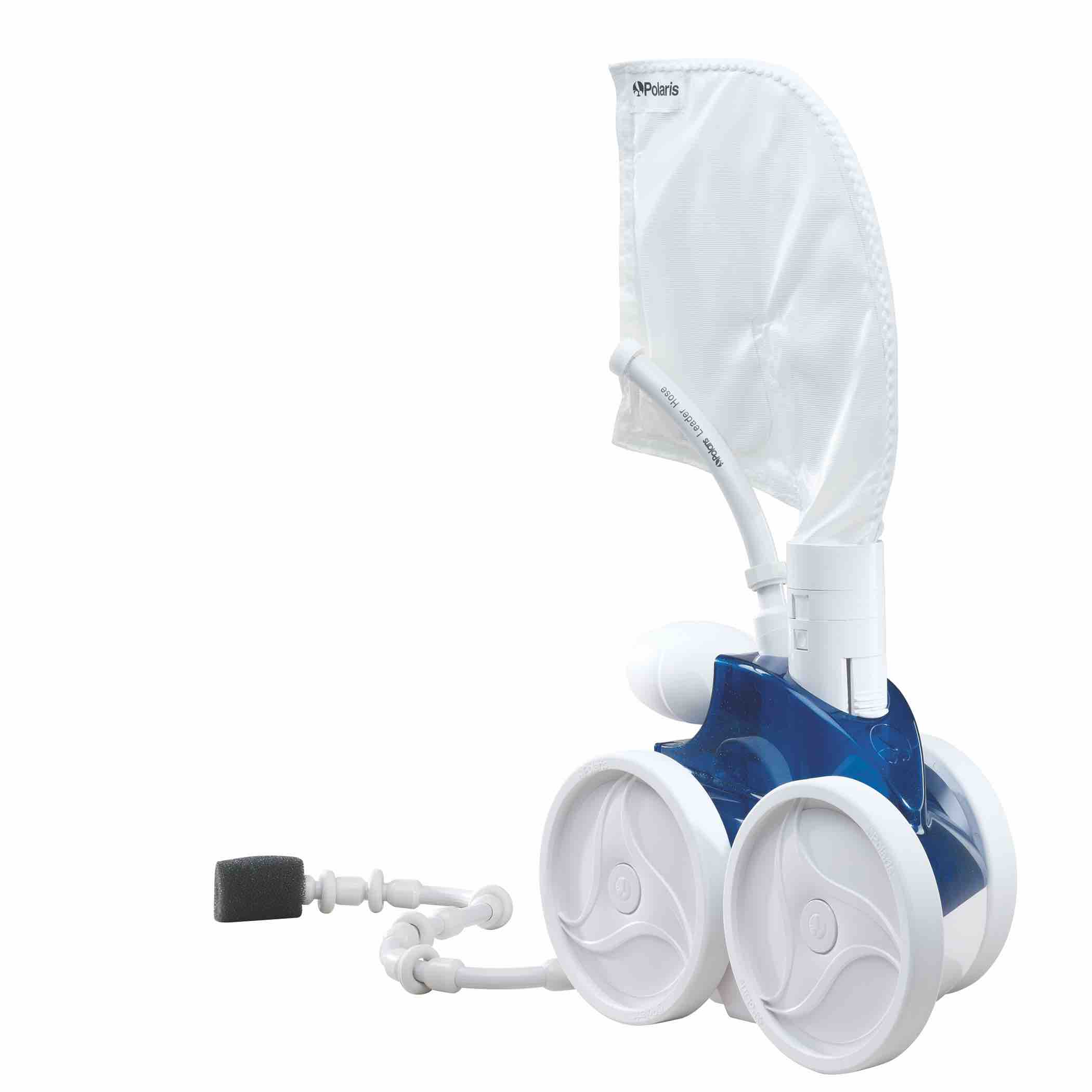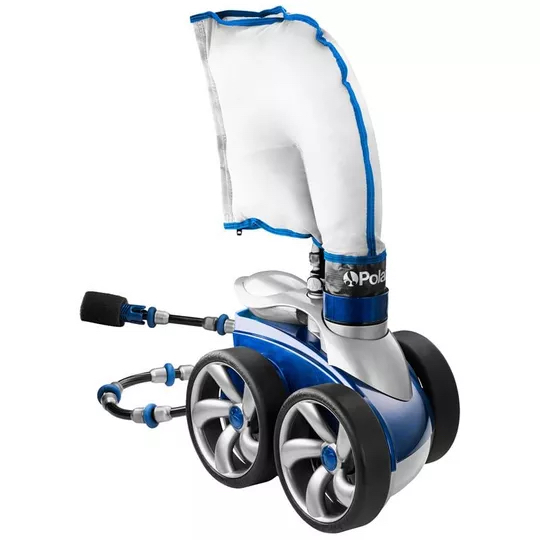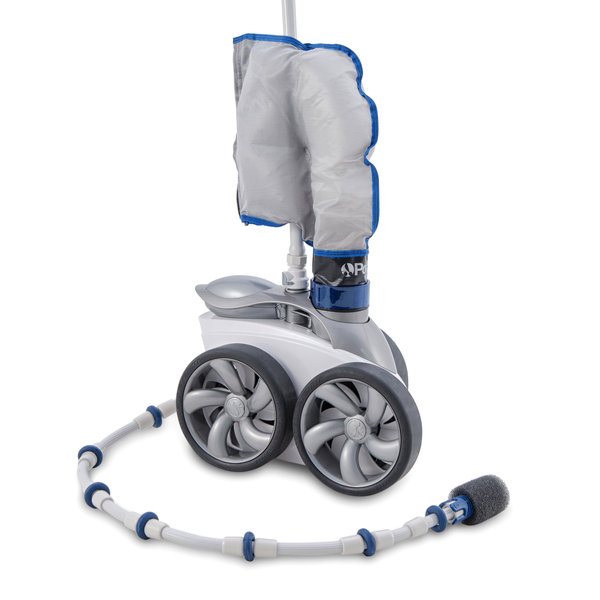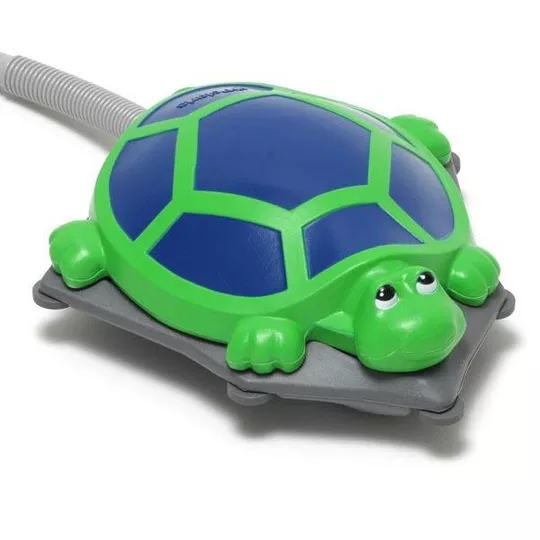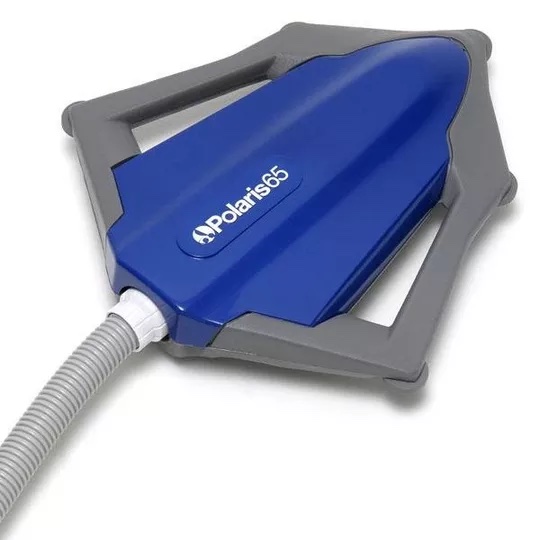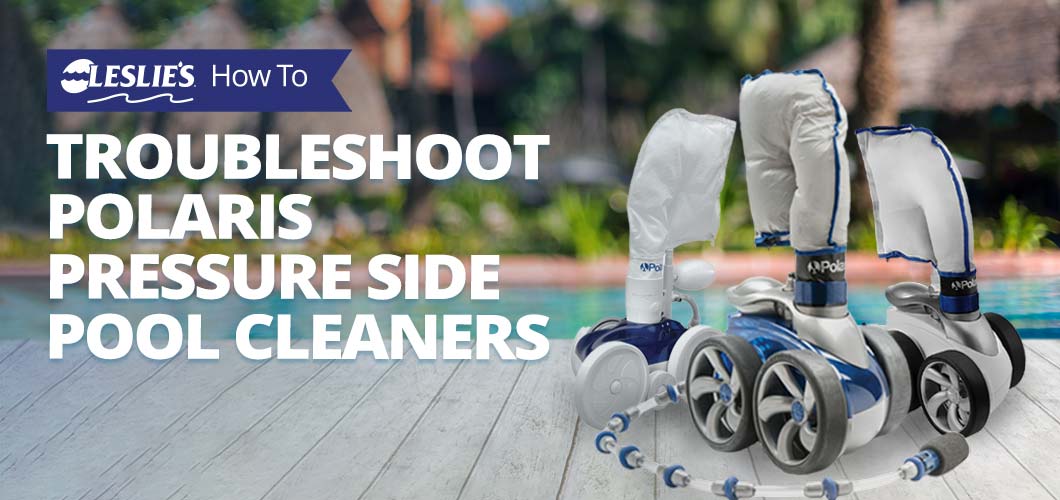
How to Troubleshoot Polaris Pressure Side Pool Cleaners
Taking great care of your swimming pool oftentimes means taking care of the equipment that keeps it clean and clear. Polaris pressure side pool cleaners are known for being durable and long-lasting, but sometimes even they need a bit of troubleshooting. In this post, we break down the steps for troubleshooting your Polaris pressure side pool cleaner.
So whether your Polaris 360's wheels aren't turning, or your Polaris 280 is spraying water out of the pool, this article will guide you through solving the most common Polaris pressure side cleaner problems.
Troubleshooting Polaris Pressure Side Pool Cleaners
The following charts detail the troubleshooting steps for the inground Polaris 280, 360, 380, 3900, and P39, pressure side cleaners, as well as the above-ground 65 Turbo Turtle, and Vac-Sweep 65 cleaners.
| Problem | Solution |
|---|---|
| Cleaner stays on steps or other obstacles for more than 3 minutes. | 1. Inspect the wheel RPM (rotations per minute). 2. Verify the back-up valve is cycling, and adjust the thrust jet. 3. Remove unnecessary pool hardware, or install a ladder guard kit. 4. Check the debris bag and empty if needed. |
| Cleaner is sluggish. | 1. Check the filter screen in the Quick Disconnect and clean if necessary. 2. Inspect and clean the skimmer basket, pump basket, and pool filter. 3. Check hoses, connections, and swivels for leaks that could cause water pressure loss. 4. Verify the wheel RPM is between 28–32. |
| Cleaner flies around the pool and does not touch the bottom. | 1. Check the wheel RPM. If the cleaner is connected to a dedicated return line with a diverter valve, adjust the valve to decrease water flow to the cleaner. If the RPM is more than 32, unscrew the pressure relief valve to decrease water flow to the cleaner. 2. Verify the backup valve is cycling. Hold the valve out of the water and watch the jet. It should come on and shut off every 3.5 minutes. |
| Cleaner does not back up | 1. Verify the backup valve is cycling every 3.5 minutes. 2. Ensure the wheel RPM is between 28–32. 3. Empty the debris bag if necessary. 4. Verify the feed hose is floating, and replace the head float if it has water in it. |
| Cleaner only turns in one direction | 1. Adjust the thrust jet. 2. Ensure the feed hose assembly is floating properly. Waterlogged and older hose floats may lose buoyancy, replace if needed. 3. If the end of the hose connecting to the cleaner has a curve, align it with the curve in the feed pipe. 4. Verify the swivel on the feed pipe turns freely. |
| Feed hose tangles | 1. Remeasure the hose to verify it is adjusted to the proper length of the pool. 2. With the cleaner on, verify the swivels in the hose and the hose connections turn freely. 3. Ensure the feed hose is floating. 4. With the cleaner off, spin each of the wheels. All wheels should turn together. |
| Sweep hose is sucked into vacuum tube | 1. Ensure the opening at the end of the sweep hose is not blocked by the sweep hose scrubber. 2. Adjust the sweep hose to a gentle sweeping motion. |
| Sweep hose sprays water out of the pool | 1. Adjust the speed of the sweep hose by tightening the adjustment screw. 2. Replace the sweep hose scrubber if it is worn or missing. 3. Add a Polaris TailSweep to reduce overspray. |
| Cleaner does not clean entire pool | 1. Verify the hose length reaches within 6" of the farthest point of the pool. Order a new hose section if needed. 2. Check thrust jet for 11 o'clock position that optimizes random turning. 3. With the pump running, turn the cleaner head upside down and verify the three jets have consistent, unobstructed flow. If not, contact the Polaris service center. |
| Cleaner runs in circles on its side | 1. Check the filter bag and empty if necessary. 2. Remove the head float and shake it. Replace the float if there is water inside it. 3. Ensure the hose floats are spaced out evenly. |
Additional Troubleshooting Steps for the Polaris 360 Pressure Side Cleaner
| Problem | Solution |
|---|---|
| Cleaner does not climb walls | 1. Verify the wheel speed is 28–32 RPM. 2. Ensure the thrust jet is in the 11 o'clock position. 3. Ensure the head float is positioned all the way forward, and the hoses have been cut correctly. 4. With the pump running, turn the cleaner head upside down. Verify the three vacuum jets have consistent, unobstructed flow. |
| Tires slip on tile or fiberglass surfaces | 1. Verify the cleaner has Polaris PosiTrax® tires installed on all three wheels. These tires are only for use on tile and fiberglass surfaces. 2. Ensure the wheel speed is 28–32 RPM. |
| Wheels rotate less than 28 times per minute | 1. Verify the filter screen, pump baskets, and main filter are clean. 2. Inspect the cleaner hoses, swivels, and connectors for any leaks. 3. If the cleaner is installed on a dedicated cleaner line, adjust the diverter valve to increase flow to the cleaner. |
| Wheels rotate more than 32 times per minute | 1. If the cleaner is installed on a dedicated cleaner line, adjust the diverter valve to reduce flow to the cleaner. 2. Unscrew the pressure relief valve on the UWF® connector assembly until RPM is between 28 and 32. |
Polaris 65 Turbo Turtle and Vac-Sweep 65 Pressure Side Cleaners
Below are the troubleshooting steps for the Polaris 65 Turbo Turtle and Vac-Sweep 65 above-ground pressure side cleaners.
| Problem | Solution |
|---|---|
| Polaris does not clean the entire pool or runs slowly. | 1. Verify the pressure relief valve is releasing water. If it is not, clean or backwash the pool filter. 2. Check the filter screen in the quick disconnect and clean if necessary. 3. Verify that the float hose is the proper length. 4. Remove the surface module top. With the Polaris operating, verify that the randomizer tube is moving back and forth. 5. Verify that the water pressure is between 5 and 10 psi. A pressure tester (part #6-113- 00) is available through your participating Polaris dealer. |
| Surface module dives under the water or leans to one side. | 1. Straighten twisted hoses. 2. Lift surface module out of the water, empty it and then shake it. If water is still heard inside, remove the top, pull out the drain plug assembly and drain the module. 3. Adjust the pressure relief valve until the surface module levels off. 4. Verify that the water pressure is between 5 and 10 psi. A pressure tester (part #6-113- 00) is available through your participating Polaris dealer. |
| The float hose coils. | 1. See “Polaris does not clean entire pool” solution above. 2. Lay the float hose out straight in the sun to remove the coils. |
| Surface module moves too fast. | 1. Adjust the pressure relief valve until the surface module slows down. 2. Verify that the water pressure is between 5 and 10 psi. |
| Bag does not stay on the pool floor. | 1. Verify that the bag has been installed correctly. 2. Check for air bubbles around the jet body assembly. This may indicate air in the plumbing lines. 3. See “Surface module moves too fast” solution above. |
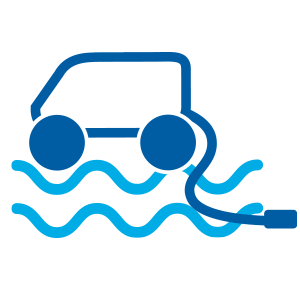
Maintenance Tips
There is no way to completely avoid problems with your Polaris pressure side cleaner, but following proper maintenance steps will limit the frequency and severity of those issues.
- Empty the debris bag and rinse off the cleaner after every cleaning cycle.
- Don't leave the cleaner in your pool long-term. Check out our blog post, Can You Leave Automatic Pool Cleaners in the Pool?, for more information on why it's best to take your cleaner out of the pool when it's not in use.
Your Polaris pressure side cleaner takes care of your pool, so make sure you take care of your cleaner! Use this Polaris pool cleaner troubleshooting guide whenever your pressure side cleaner is not functioning at its normal capacity. And when in doubt, stop in to your local Leslie's and ask about our free in-store services, including pool cleaner inspections and repair labor!
